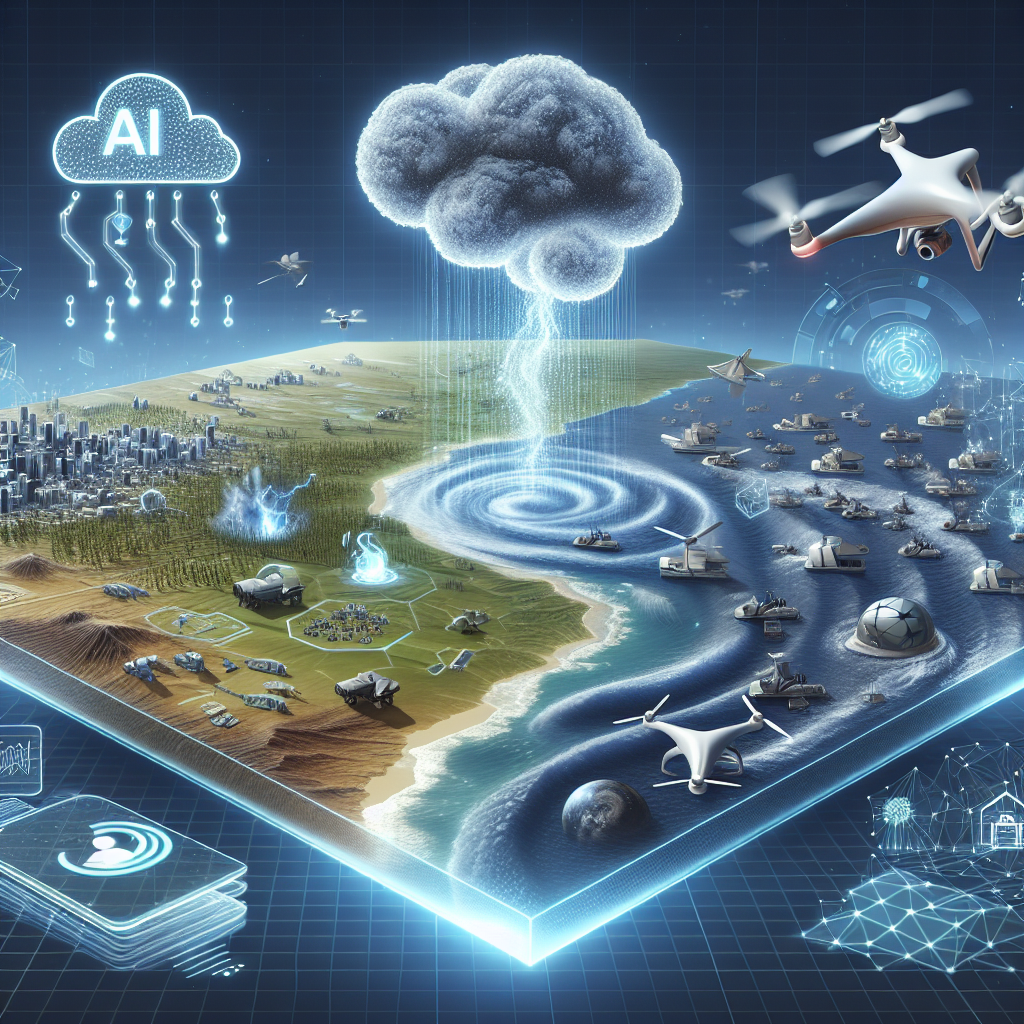Natural disasters, such as hurricanes, earthquakes, floods, and wildfires, have devastating effects on communities around the world. In the aftermath of these events, it is crucial for relief efforts to be swift, efficient, and effective in order to save lives and minimize the impact on affected populations. In recent years, artificial intelligence (AI) has emerged as a powerful tool for enhancing disaster response and relief efforts.
AI technologies, such as machine learning, computer vision, and natural language processing, have the potential to revolutionize the way we respond to natural disasters. By analyzing vast amounts of data in real-time, AI can help predict the path and intensity of a disaster, identify areas at risk, and coordinate response efforts. In this article, we will explore the various ways in which AI is being deployed in natural disaster response to enhance relief efforts.
One of the key areas where AI is making a significant impact in natural disaster response is in predictive analytics. By analyzing historical data, weather patterns, and other relevant information, AI algorithms can help predict the likelihood of a disaster occurring, as well as its potential impact. This enables authorities to take proactive measures, such as evacuating at-risk areas, stockpiling supplies, and mobilizing resources, before a disaster strikes.
For example, researchers at the University of California, Irvine, have developed an AI system that can predict the likelihood of wildfires occurring in a given area up to six months in advance. By analyzing satellite imagery, weather data, and other factors, the system can identify areas at high risk of wildfires and help authorities allocate resources and plan response efforts accordingly.
In addition to predictive analytics, AI is also being used to improve disaster response coordination and communication. During a disaster, communication is critical for coordinating relief efforts, disseminating information to the public, and ensuring the safety of first responders. AI-powered chatbots and virtual assistants can help automate communication tasks, such as answering common questions, providing updates on the situation, and directing people to the nearest shelter or medical facility.
For example, after Hurricane Harvey hit Texas in 2017, the American Red Cross deployed an AI-powered chatbot on its website to provide real-time information on shelters, emergency services, and other resources to affected residents. The chatbot was able to handle thousands of inquiries simultaneously, reducing the burden on human operators and ensuring that accurate information was available to those in need.
AI is also being used to improve the efficiency of search and rescue operations during natural disasters. By analyzing satellite imagery, drone footage, and other data sources, AI algorithms can help identify the location of missing persons, assess the structural integrity of buildings, and prioritize areas for search and rescue teams to focus on. This can help save valuable time and resources, as well as increase the likelihood of finding and rescuing survivors.
For example, in the aftermath of the 2010 earthquake in Haiti, researchers at NASA used AI algorithms to analyze satellite imagery and identify areas where buildings had collapsed. This information was then used to prioritize search and rescue efforts, leading to the successful rescue of several survivors who had been trapped under the rubble for days.
Despite the many benefits of AI in natural disaster response, there are also challenges and limitations that need to be addressed. One of the key challenges is the lack of data and infrastructure in many disaster-prone regions, particularly in developing countries. Without access to reliable data and connectivity, AI algorithms may not be able to perform effectively, limiting their potential impact on relief efforts.
Another challenge is the ethical and privacy implications of using AI in disaster response. For example, there are concerns about the potential misuse of AI-powered surveillance systems, such as facial recognition technology, during disasters. It is important for governments and organizations to establish clear guidelines and regulations to ensure that AI is used ethically and responsibly in disaster response.
In conclusion, AI has the potential to greatly enhance natural disaster response and relief efforts by improving predictive analytics, coordination, communication, and search and rescue operations. By harnessing the power of AI technologies, we can better prepare for and respond to disasters, saving lives and minimizing the impact on affected communities. However, it is crucial to address the challenges and limitations of AI deployment in disaster response, and to ensure that it is used ethically and responsibly to benefit those in need.
FAQs:
Q: What are some examples of AI technologies being used in natural disaster response?
A: Some examples of AI technologies being used in natural disaster response include predictive analytics, communication chatbots, search and rescue algorithms, and satellite imagery analysis.
Q: How can AI help improve the efficiency of relief efforts during natural disasters?
A: AI can help improve the efficiency of relief efforts by predicting the likelihood of a disaster occurring, coordinating response efforts, automating communication tasks, and prioritizing search and rescue operations.
Q: What are some of the challenges of using AI in natural disaster response?
A: Some of the challenges of using AI in natural disaster response include the lack of data and infrastructure in many disaster-prone regions, ethical and privacy implications, and the potential misuse of AI-powered surveillance systems.
Q: How can governments and organizations ensure that AI is used ethically and responsibly in disaster response?
A: Governments and organizations can ensure that AI is used ethically and responsibly in disaster response by establishing clear guidelines and regulations, conducting regular audits and oversight, and engaging with stakeholders to address concerns and ensure transparency.

